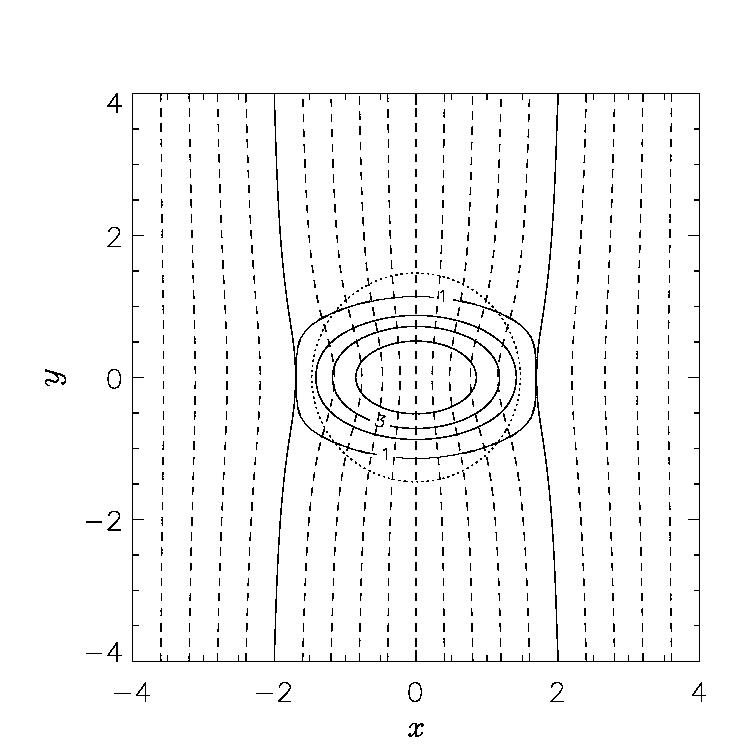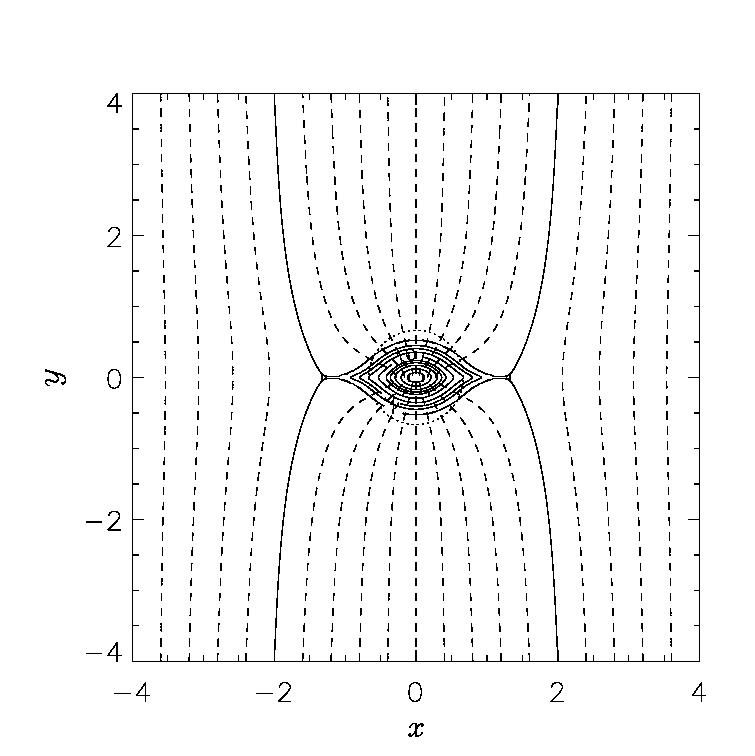Structure of Magnetized Molecular Filaments

Observations of thermal dust emissions with Herschel satellite
have revealed that molecular clouds consist of
many filaments (Menshchikov et al. 2010).
That is, the molecular filaments are the building blocks of interstellar
clouds.
On the other hand, near IR interstellar polarization indicates
the filaments are extending in the perpendicular direction to
the interstellar magnetic field (Sugitani et al. 2011).


Equilibrium solutions of isothermal clouds, in which the gravity is balanced
with the Lorentz force, thermal pressure and the external pressure, are
obtained with a self-consistent field method.
The above figures show typical solutions of cross-cut of these filaments.
Dashed and closed solid curves represent, respectively,
magnetic field lines and isodensity contour lines.
Left and right panels show solutions with low and high center-to-surface
density ratios, respectively.
We obtained an empirical relation between the maximum supported mass against
the self-gravity, λmax, and magnetic flux,
Φcl, as,
λmax≅0.24 Φcl/G1/2
+ 1.66 cs2,
where λmax and Φcl represent,
respectively, mass of the filament per unit length and
one-half of the magnetic flux per unit length of the filament.
For Φcl >
3 pc μG (cs/190m s-1)2,
the magnetic force (the Lorentz force) plays more important role
than the thermal pressure in determining the equilibria.
The importance of this article is that structure and the maximum mass
of the building block of molecular clouds are first determined theoretically.
(2014/3/17)
Magnetohydrostatic Equilibrium Structure and Mass of Filamentary Isothermal Cloud Threaded by Lateral Magnetic Field, by Tomisaka, Kohji, 2014, ApJ, 784, 1
[ADS]
[arXiv]
Kohji Tomisaka (private website)


